United Arab Emirates
For some, Dubai is a promising place of desire. A glittering desert metropolis with magnificent buildings of superlatives. A place of the rich and beautiful. Lax tax laws have created a unique environment for adventurous self-made entrepreneurs and bloggers. The desert sand is the gold that makes dreams come true.
But there is a second side, another interpretation. Dubai as a retreat for tax cheats and would-be millionaires who make their money with dubious business ideas. A destructive hunger for resources. The exploitation of guest workers who keep the country running. The uninspired rip-off of a dying world.
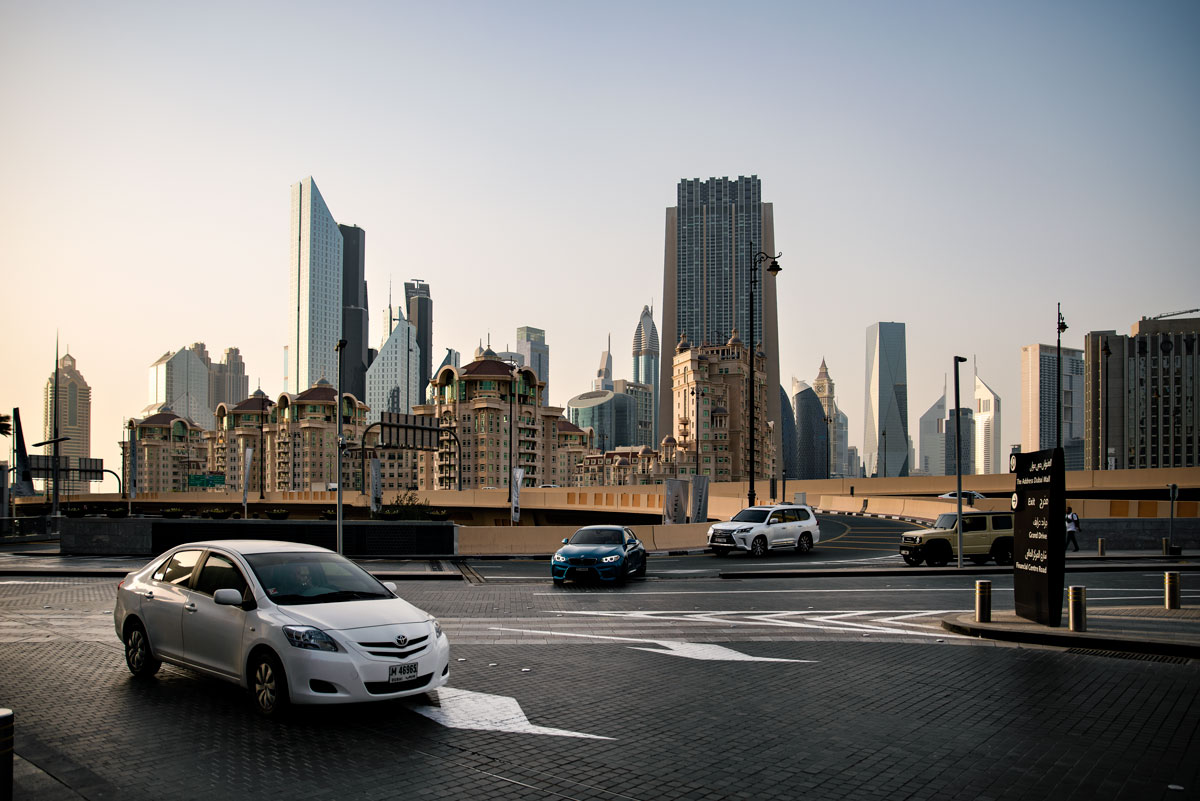
Already in spring the sun burns down on the desert city of Dubai. The beach here is an artificially created place that urges one to have fun and to consume. Restaurants and bars, air-conditioned and with the sterile look of the 21st century, line the beach promenade. A tower that can only be visited for a high entrance fee, because super-rich people spend time there. But those who seek individuality in luxury here will find that capitalism is an equalizer.
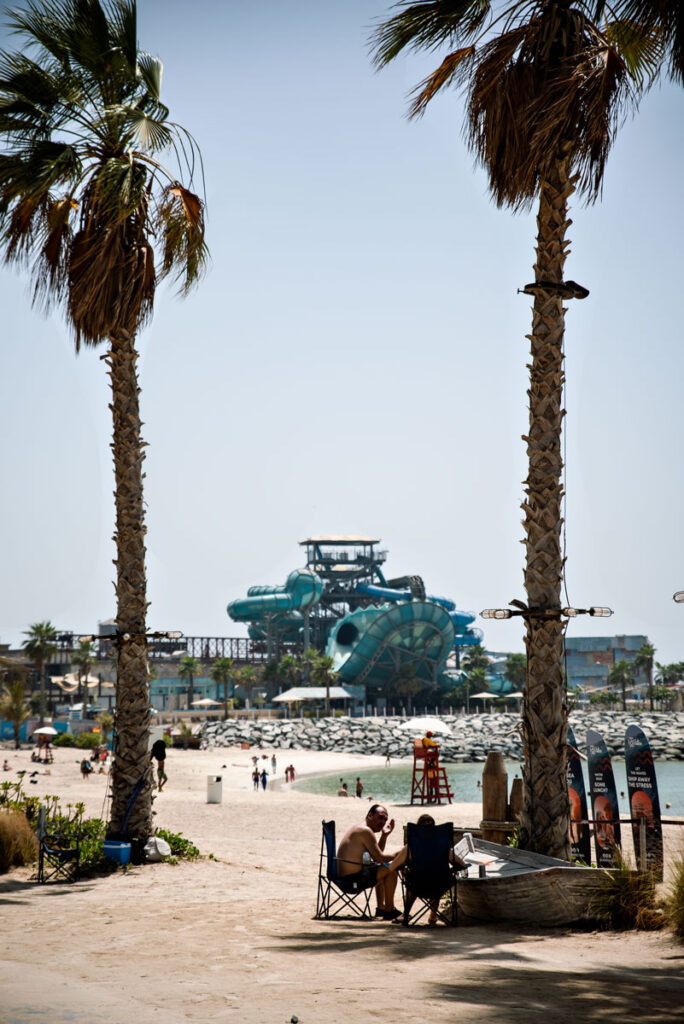
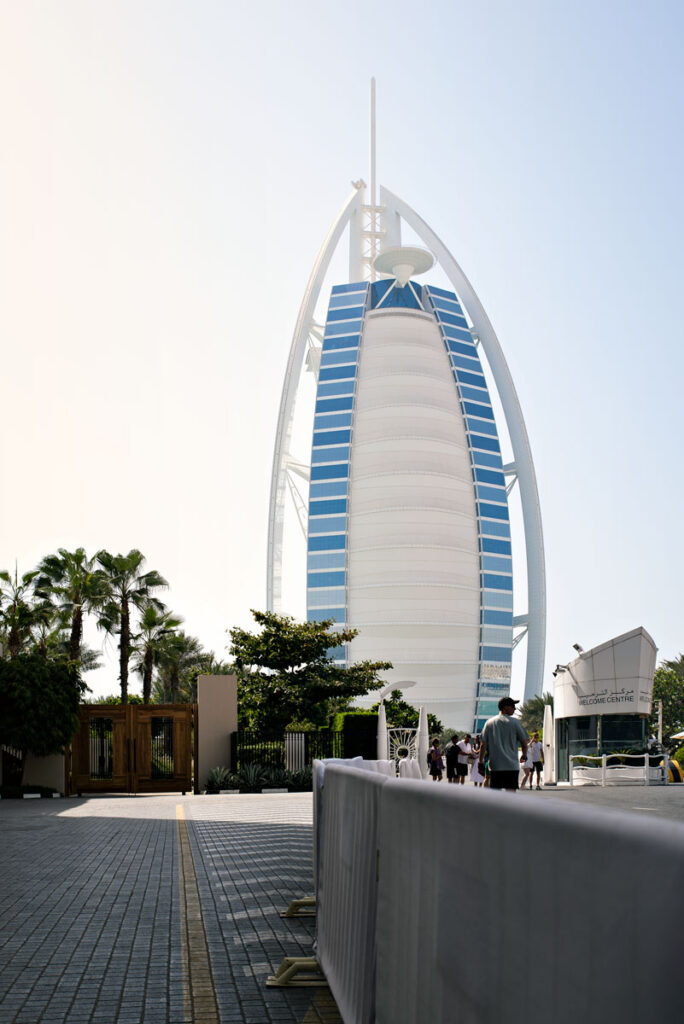
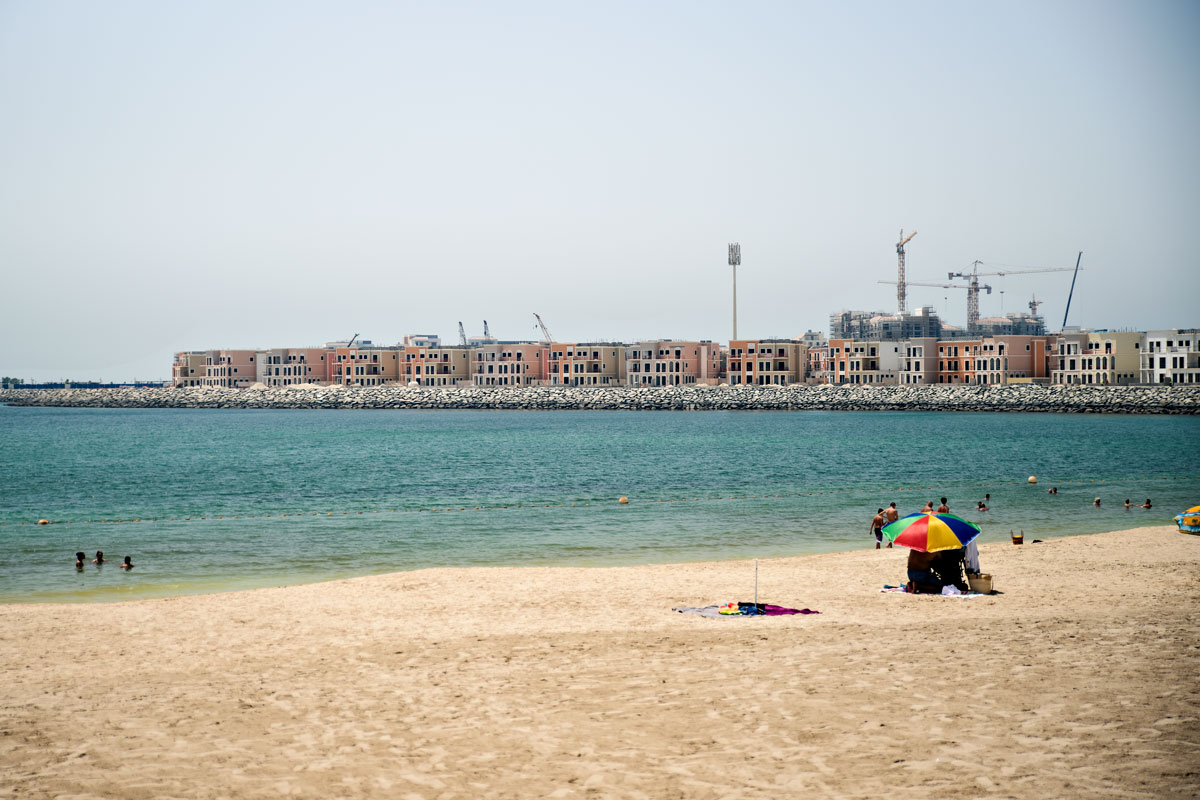
An average annual temperature of 27°C. But the Dubai Mall is a world apart, hermetically sealed off from the arid outside conditions. Masses of water rush down 22 meters. In the midst of the waterfall, silver human sculptures. Do they symbolize the conquest of the force of nature? Or their victim, swept along and defencelessly caught in the whirlpool?
Not far away: an ice skating rink and a gigantic aquarium in which exotic fishes circle around in ever-changing circles. It quickly becomes clear: this world doesn’t belong here. And yet somehow it does.
Just a few hundred meters away, the tallest tower on earth rises above this panopticon and casts its shadow over the city.
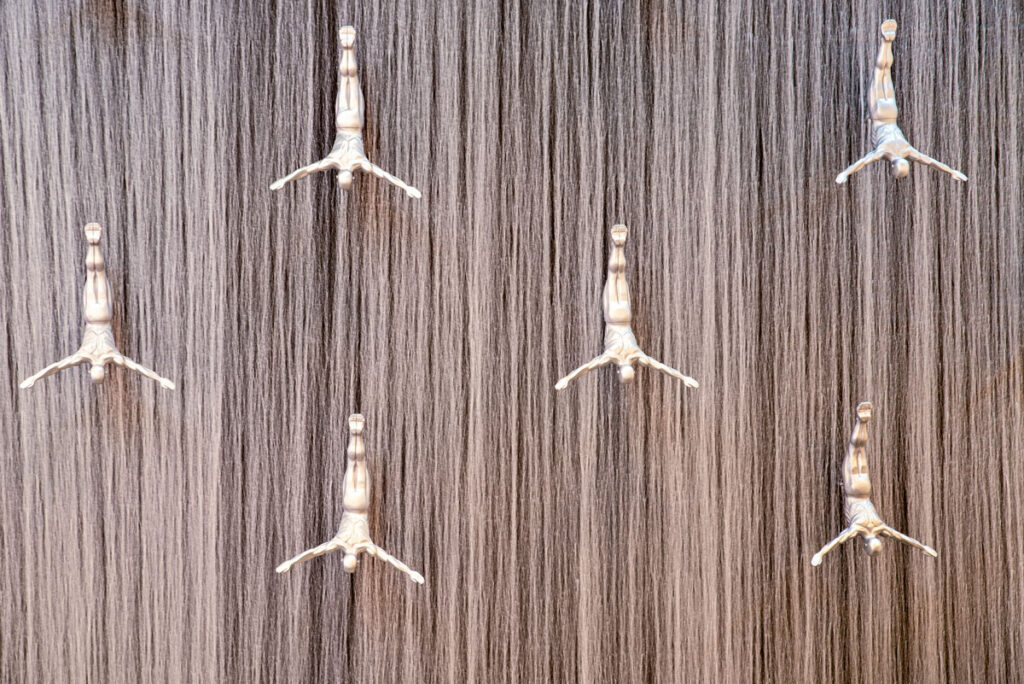
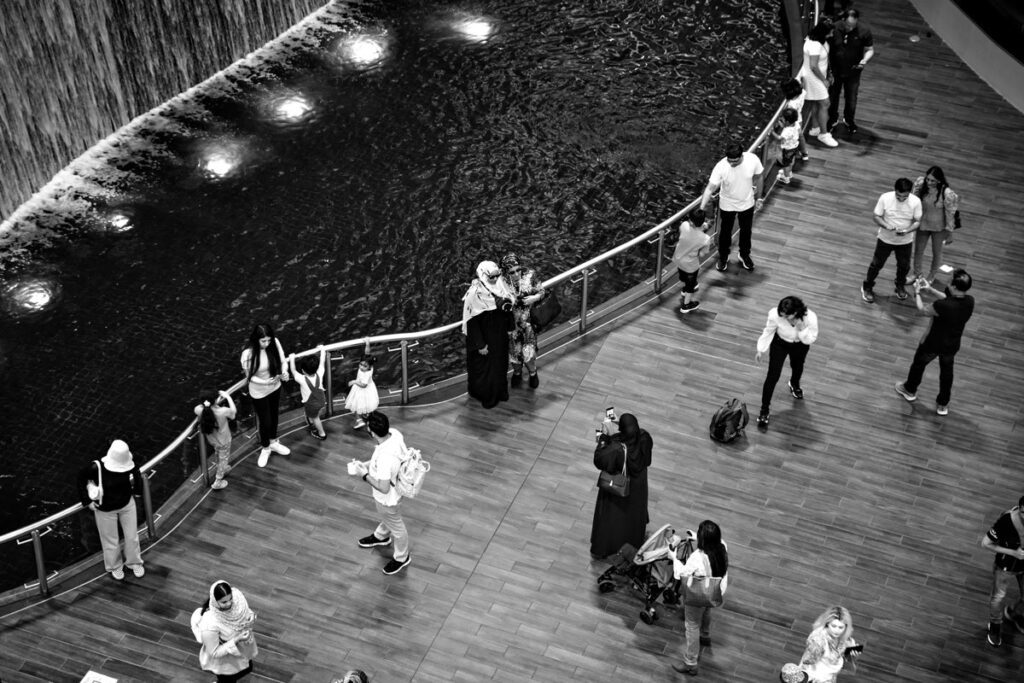
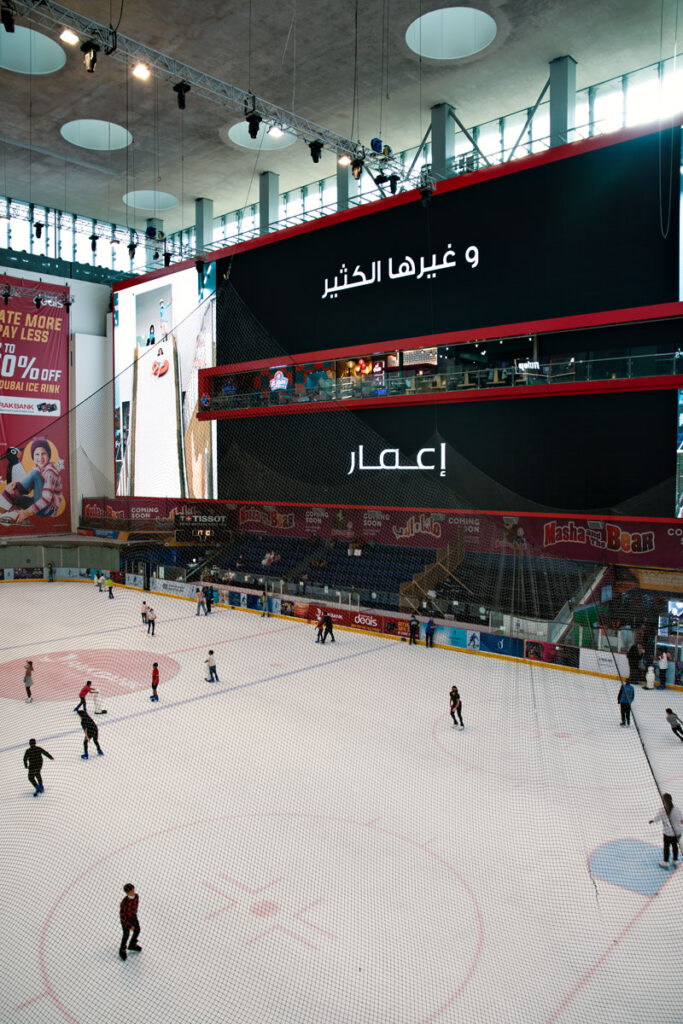
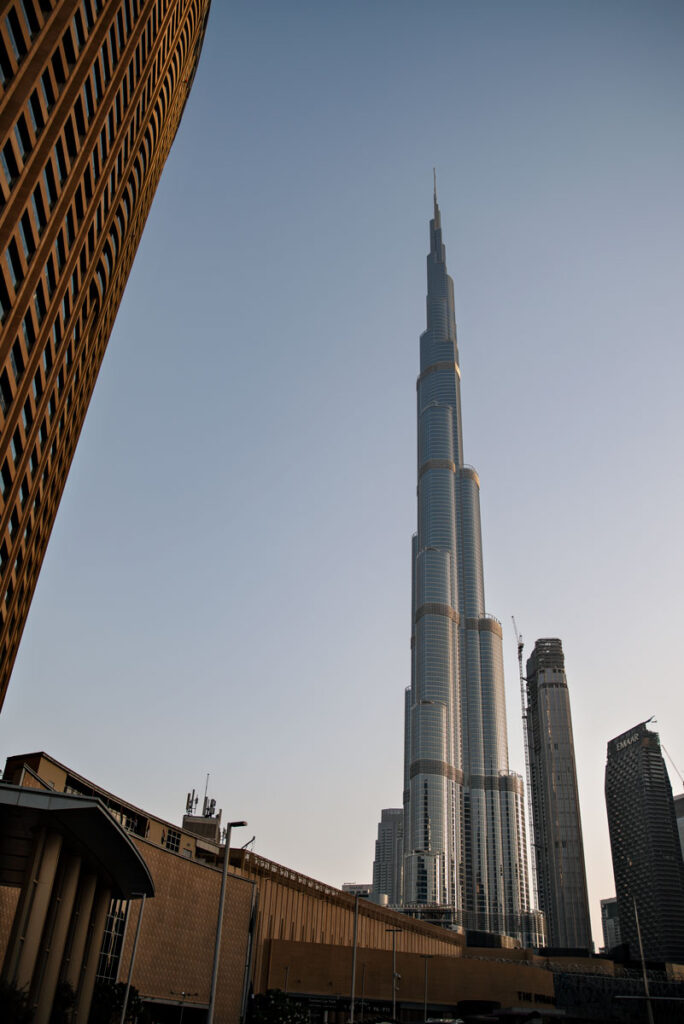
Manhattan, Shanghai, Tokyo. One mega-city like the other. Cars as a status symbol. Skyscrapers as a sign of victory over physics. Anonymous franchise stores and little green. Why should Dubai be any different?
In the evening sun, when the temperature becomes more bearable and people step out of their offices and apartments, the glass and steel of the tower facades are reflected. The city resembles a box of gold. Lights illuminate the evening sky and the show begins.
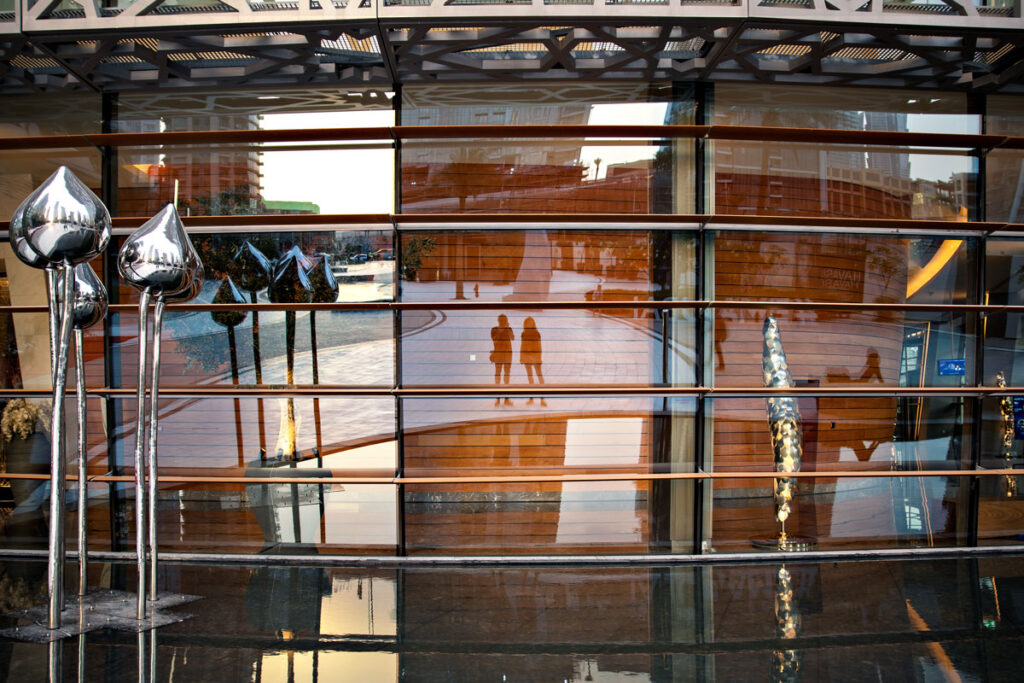
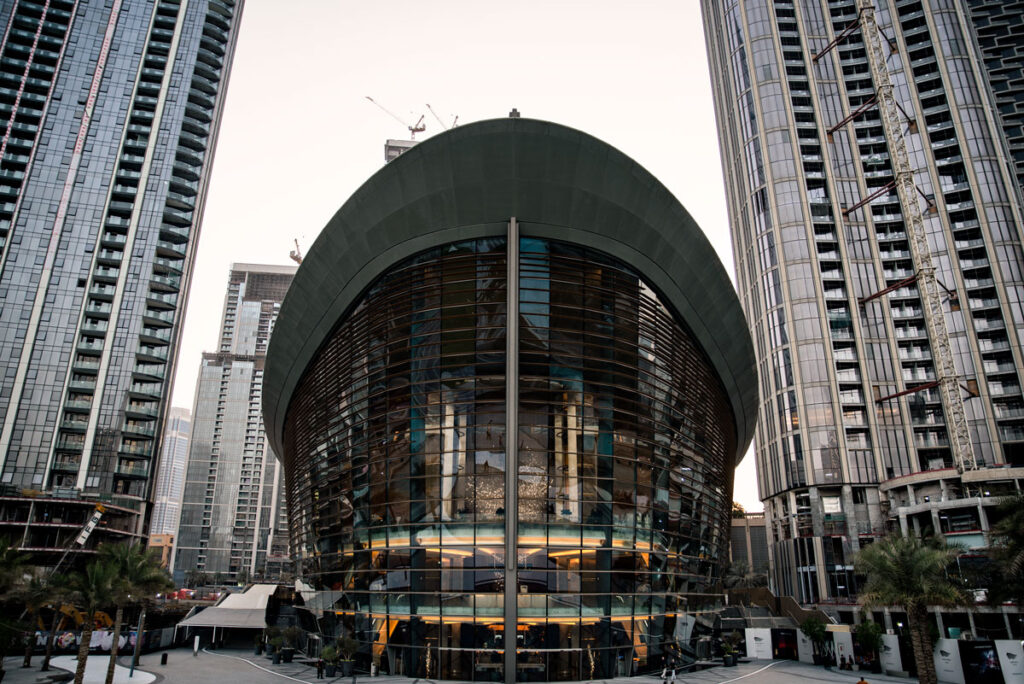
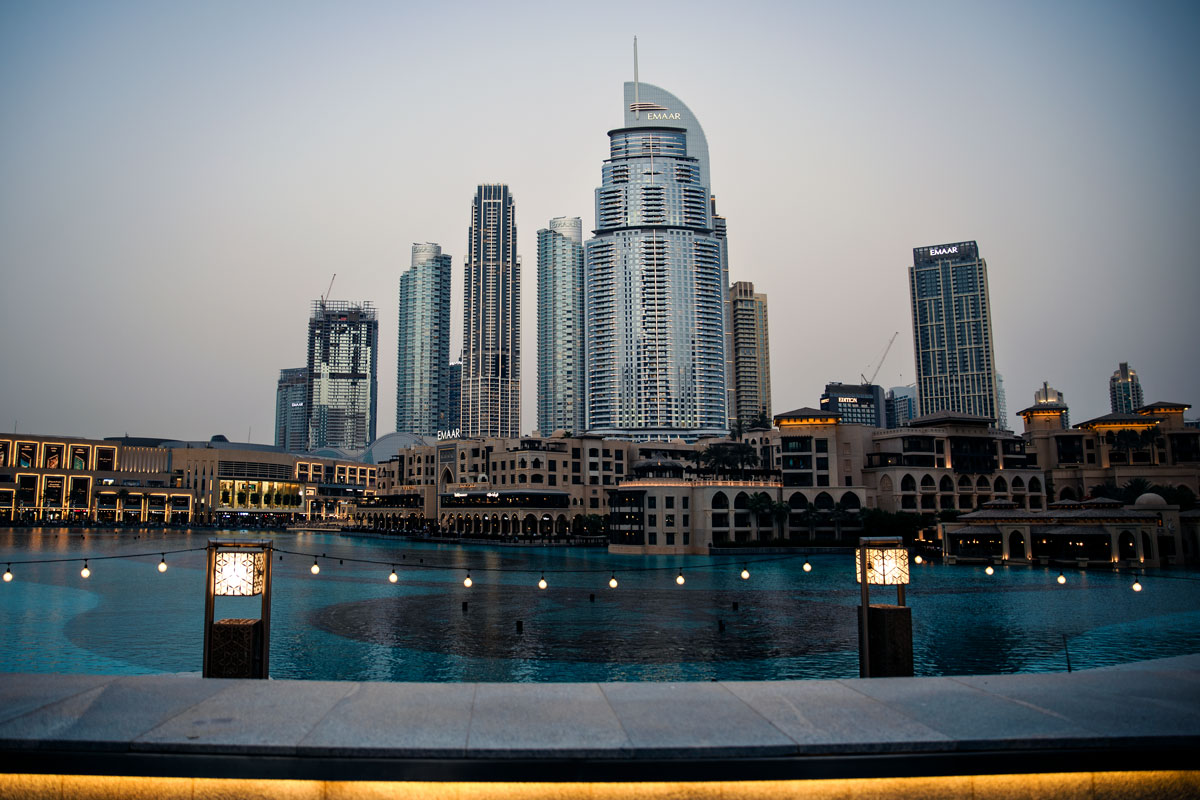
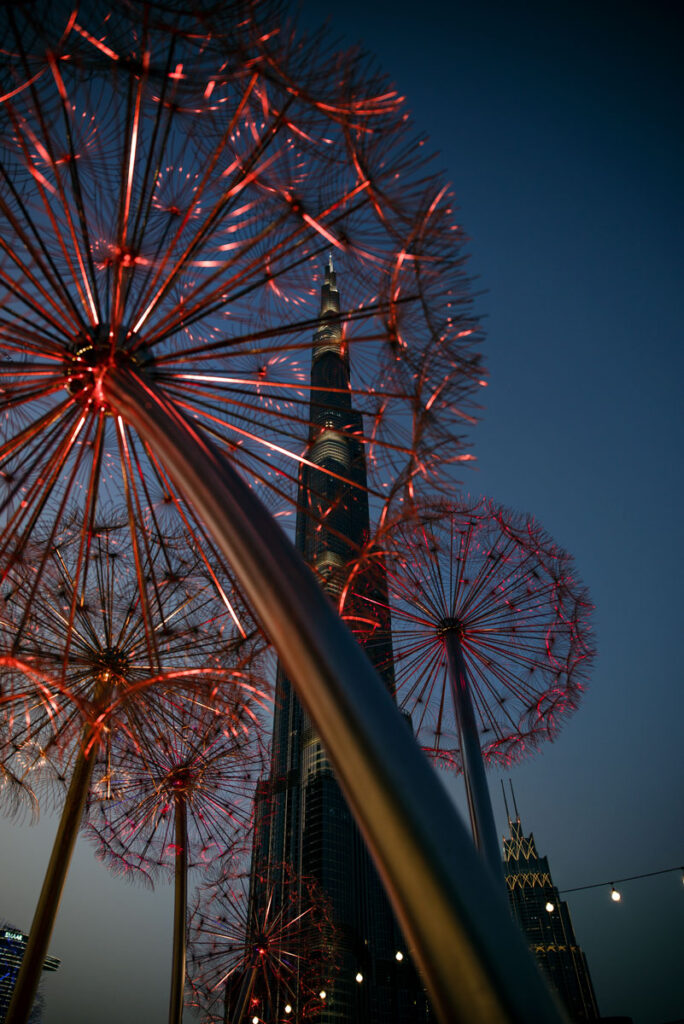
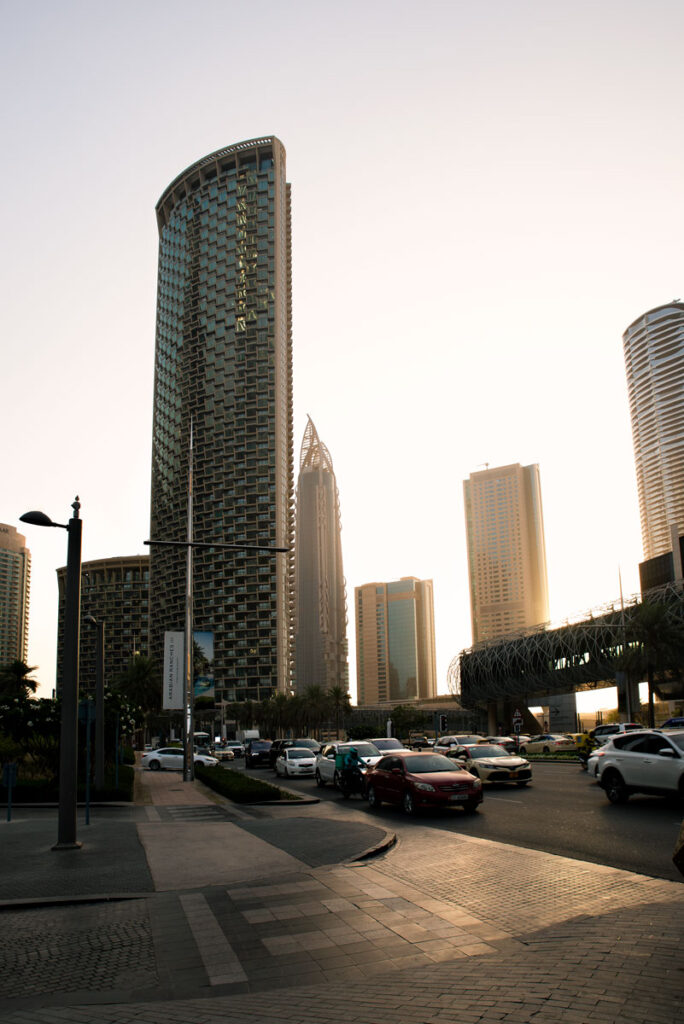
Along the Gulf coast, the four emirates of Sharjah, Ajman, Umm al-Qaiwain and Ra’s al-Khaimah, the latter known for its pearls, can be easily covered in two days. Once we leave the emirate of Dubai, we hardly encounter any tourists. Small mosques line up with visitorless regional museums and old defense fortifications. Remote country houses stand not far from dilapidated settlements. There is less pomp and splendor here, but all the more real life.
Chris' Tip
Dubai and Abu Dhabi are the central cities that dominate the United Arab Emirates. But they are not necessarily representative for the entire country. That’s why you should venture out of Dubai. A rental car doesn’t cost much and traffic flows smoothly. Traveling in the Emirates is also very safe and you can move around freely. Ideal conditions to get to know other facets and come into contact with different people. The emirate of Fujairah is probably the most interesting, where you will also find a sufficient tourist infrastructure and enough sights for two days.
Camels stand at the edge of the road and eat the hard leaves of the barren bushes. The beach promenades are almost deserted. Here and there, the attempt to carry tourism out of Dubai and into the far corners of the country is visible.
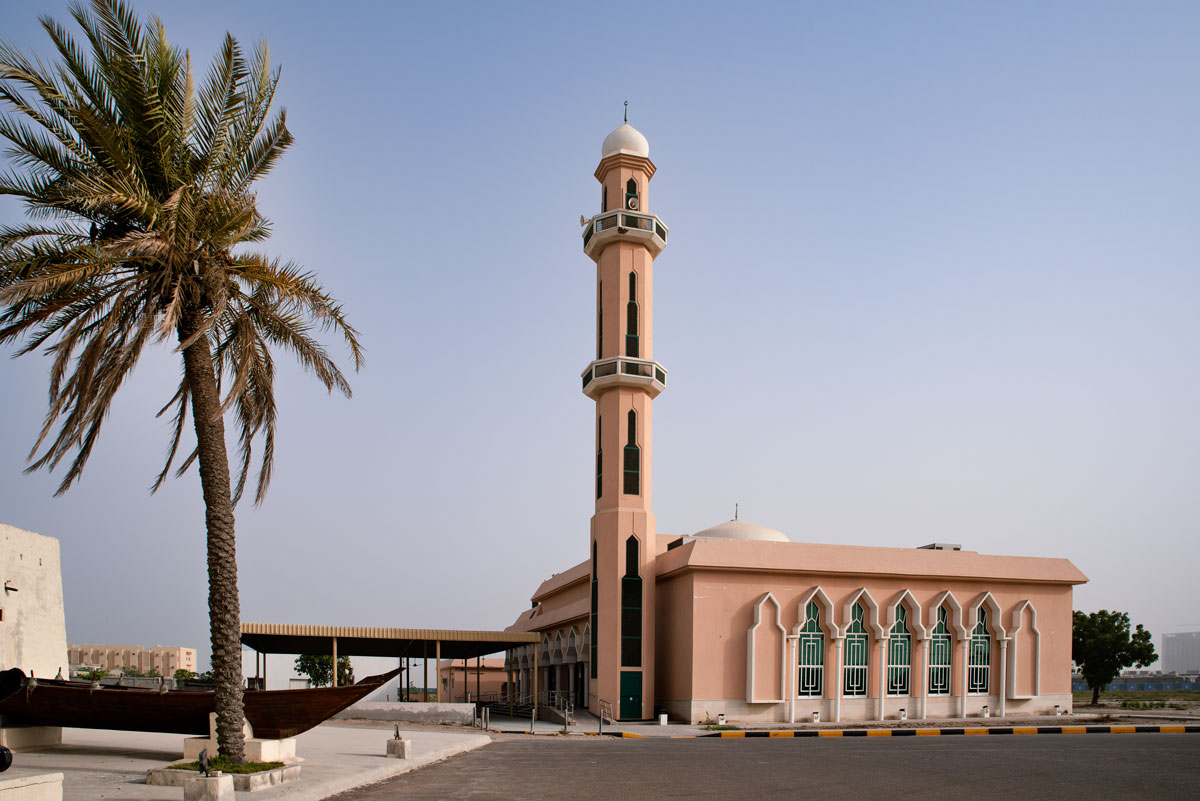
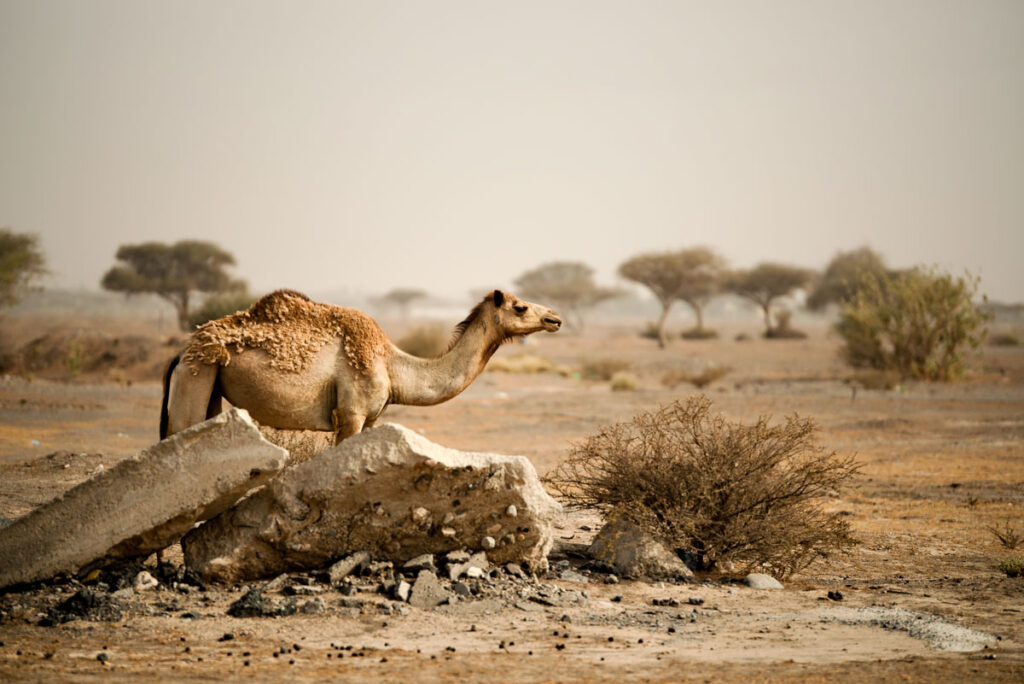

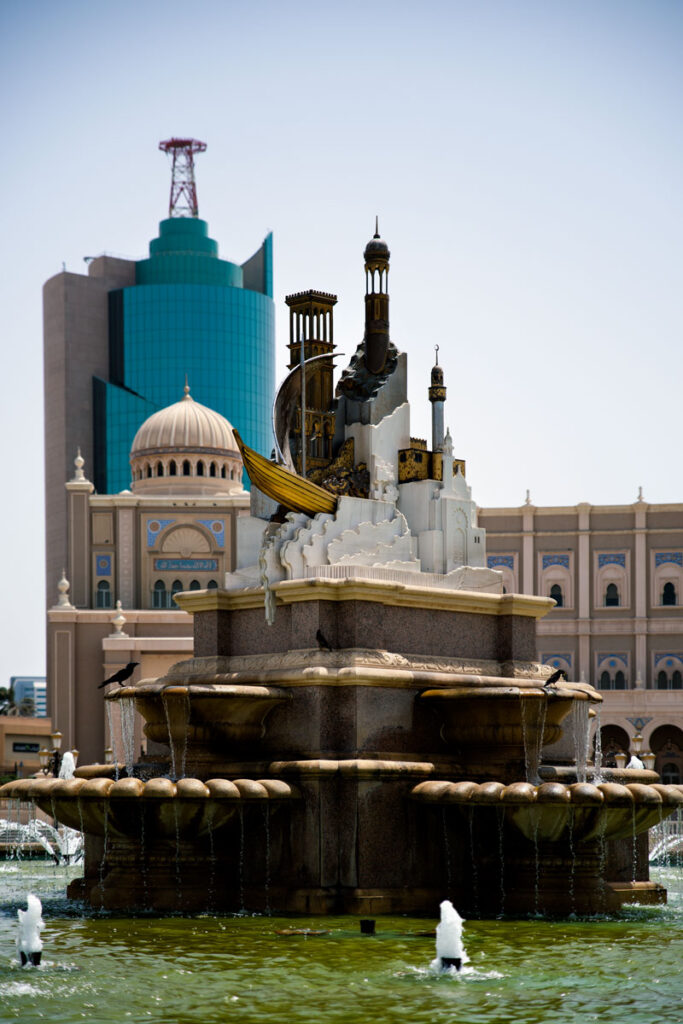
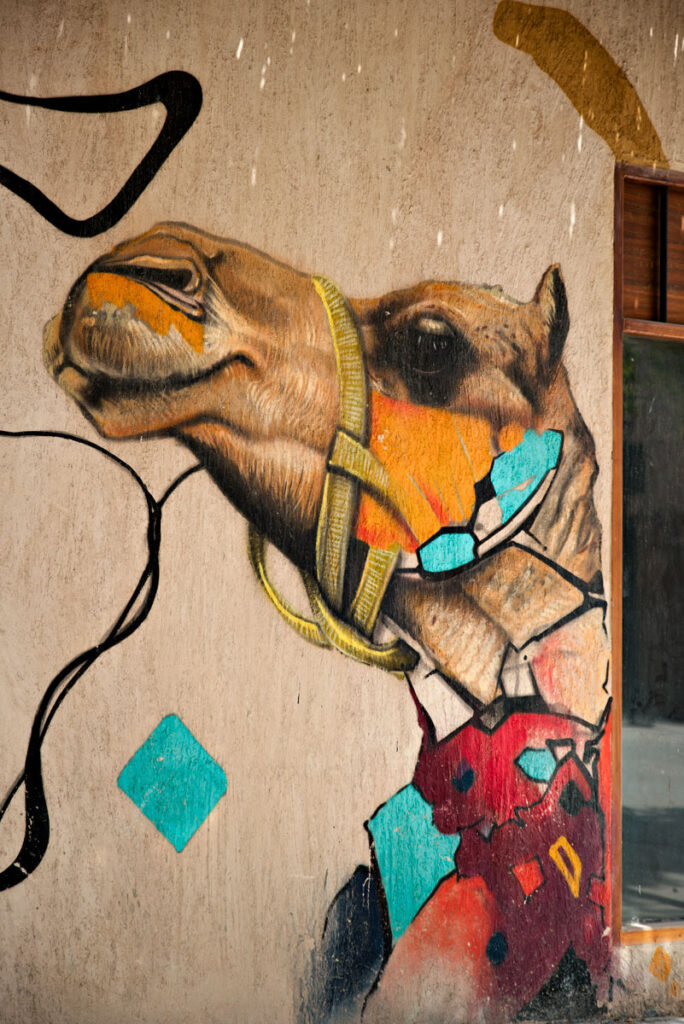
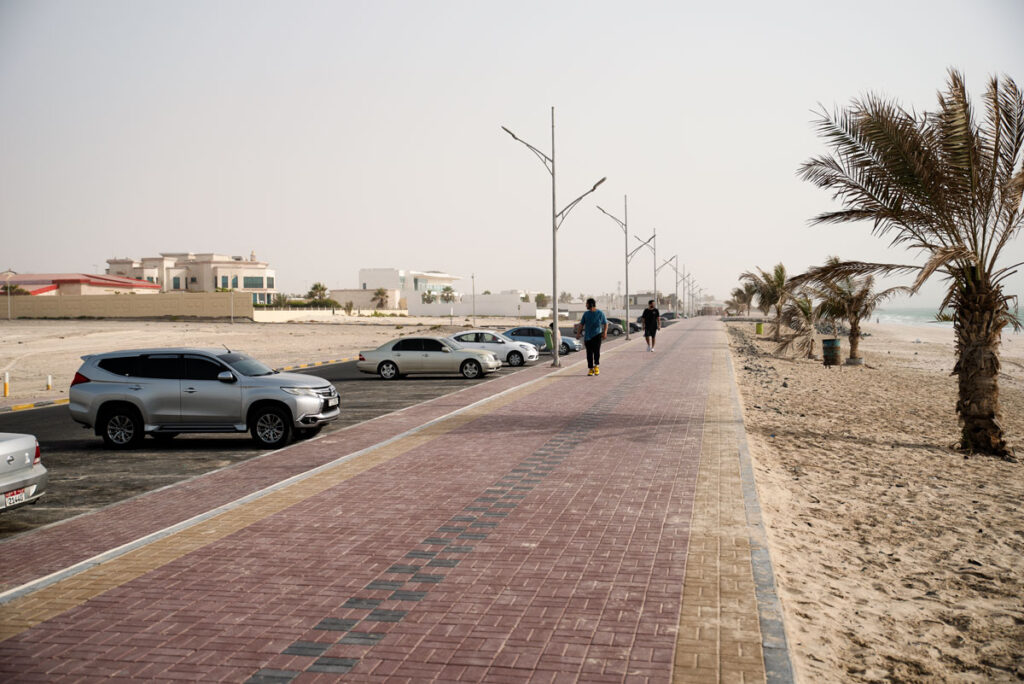
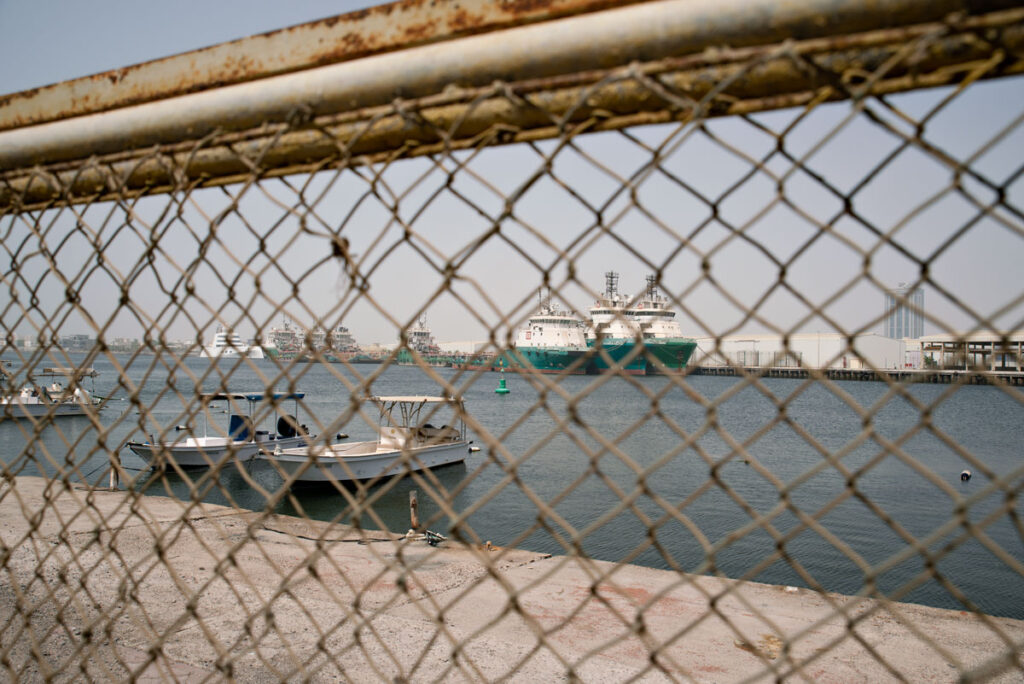
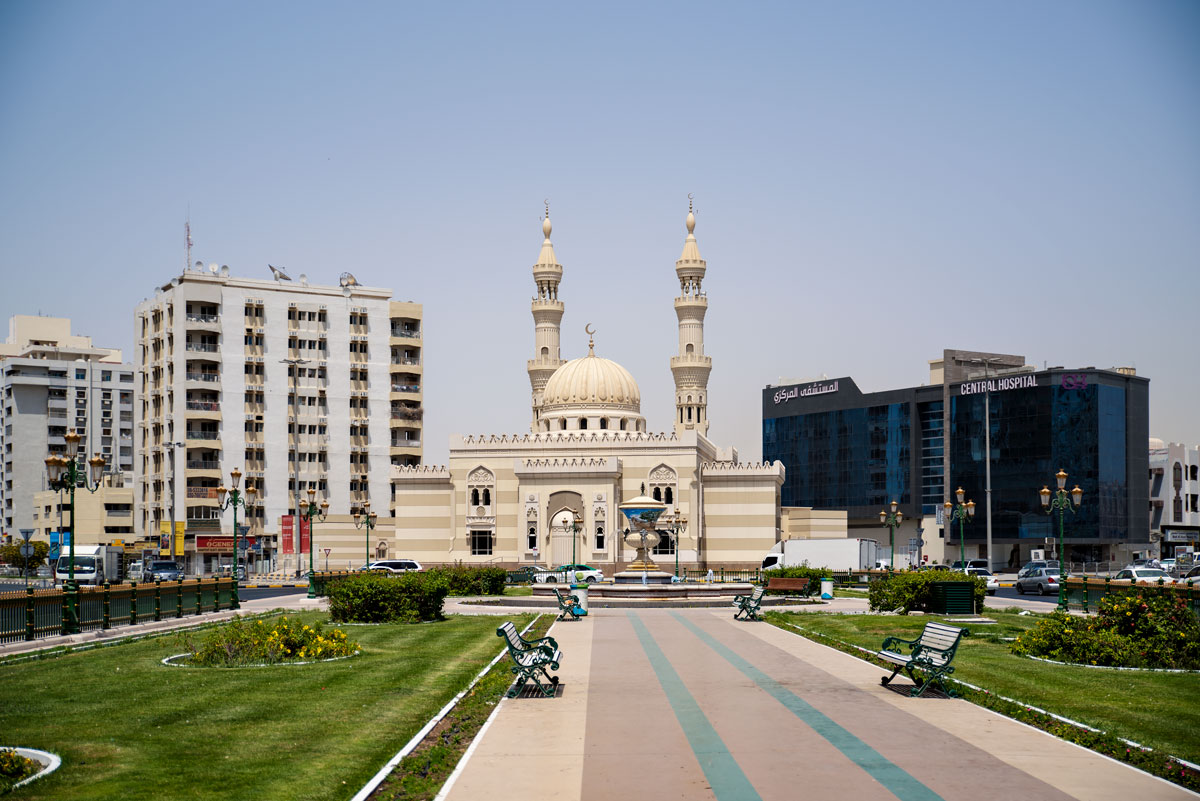
In the west on the Gulf of Oman lies the emirate of Fujairah. High-rise buildings have grown up along the main street, and shopping malls line the outskirts of the city. The cityscape is dominated by the 16th century fort and the country’s second largest mosque.
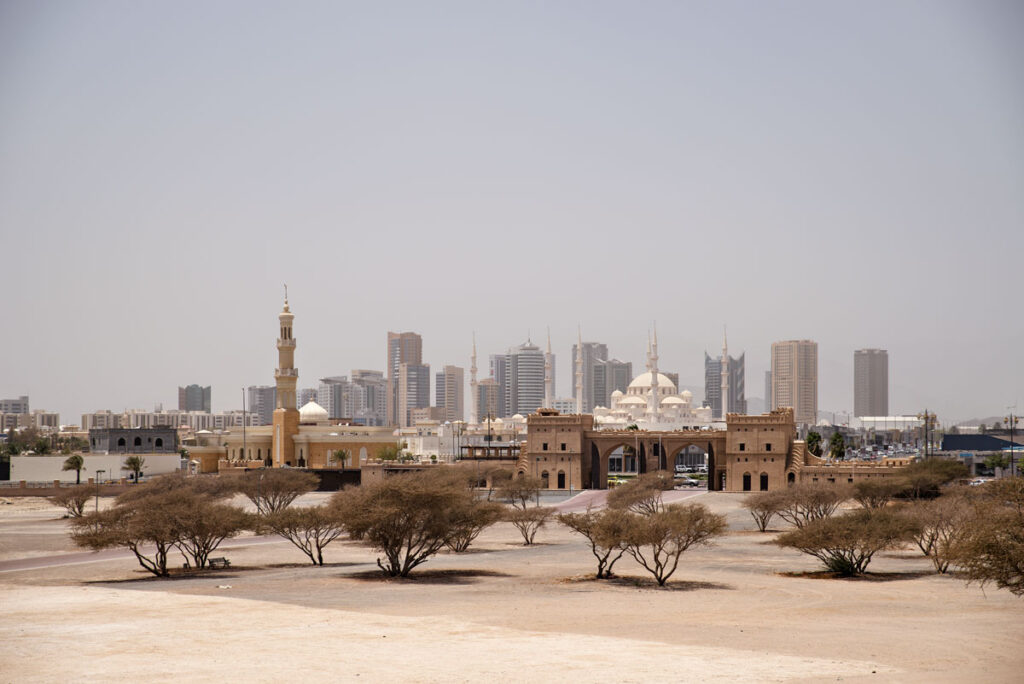
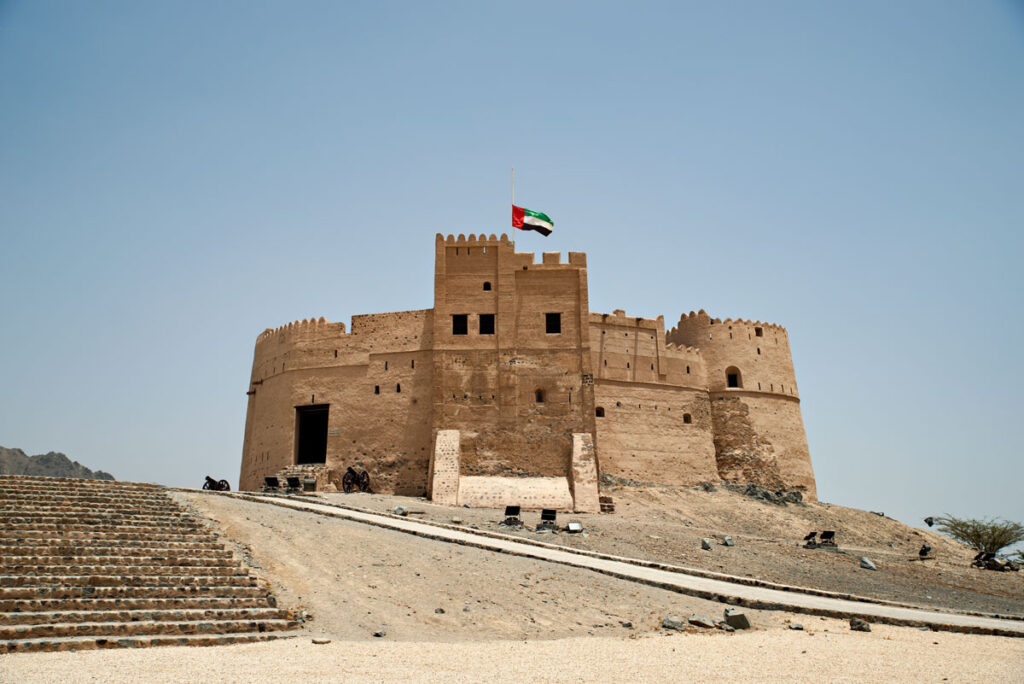
The Sheikh Zayed Mosque in Fujairah has six minarets, as only the largest and most magnificent mosques have. The carpet in the prayer room is woven in Belgium. A golden chandelier weighing tons hangs above it. The mosque has room for about 14,000 people. There is little room for humility here. This place is meant to impress.
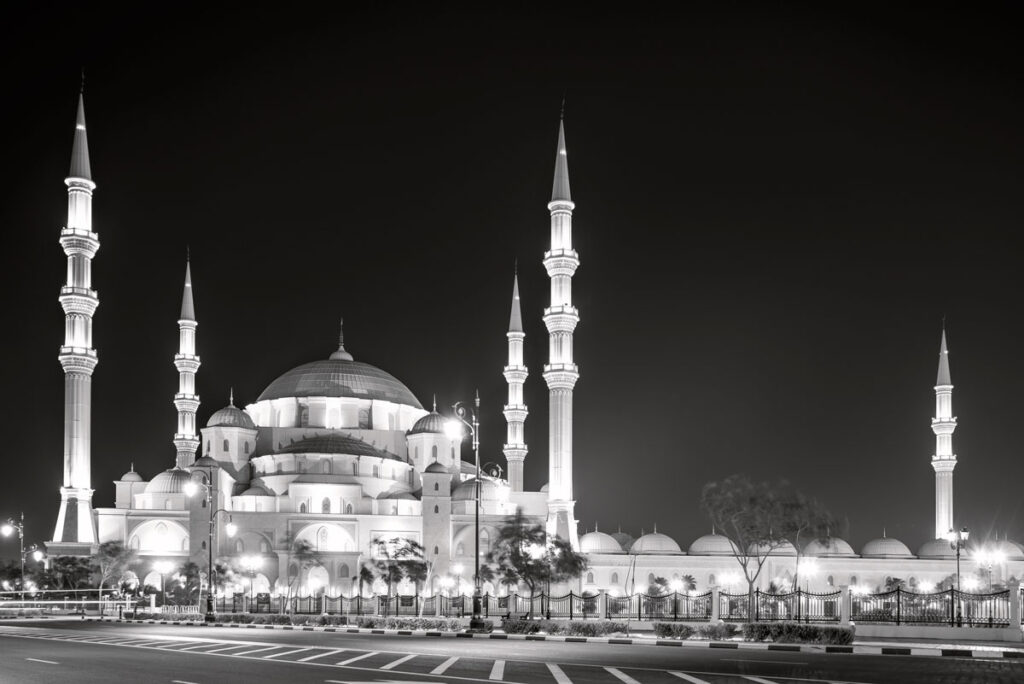
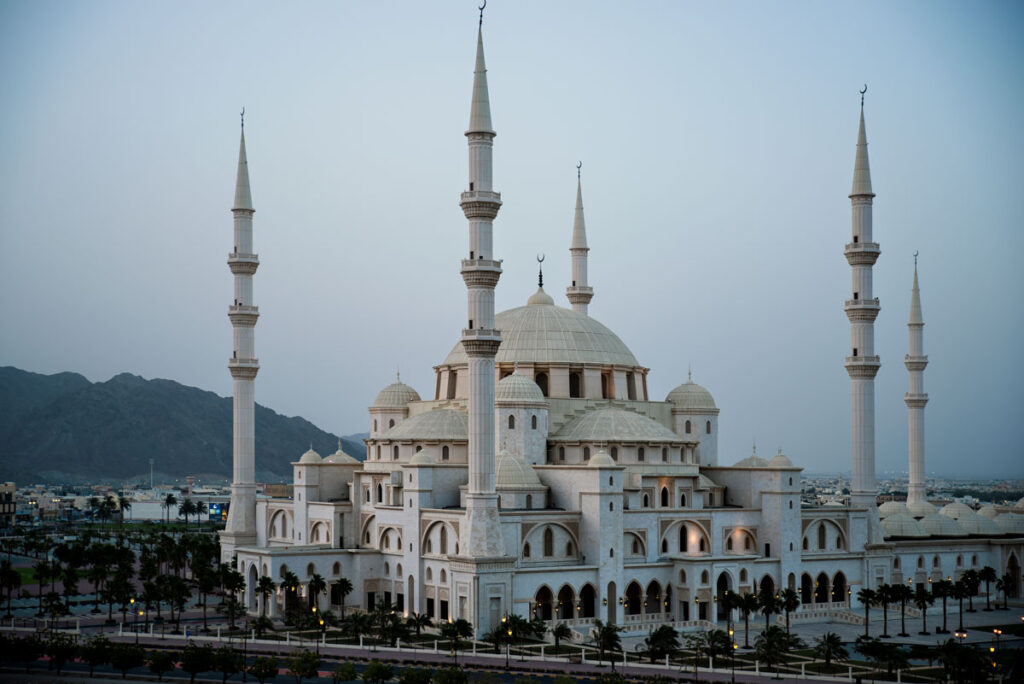
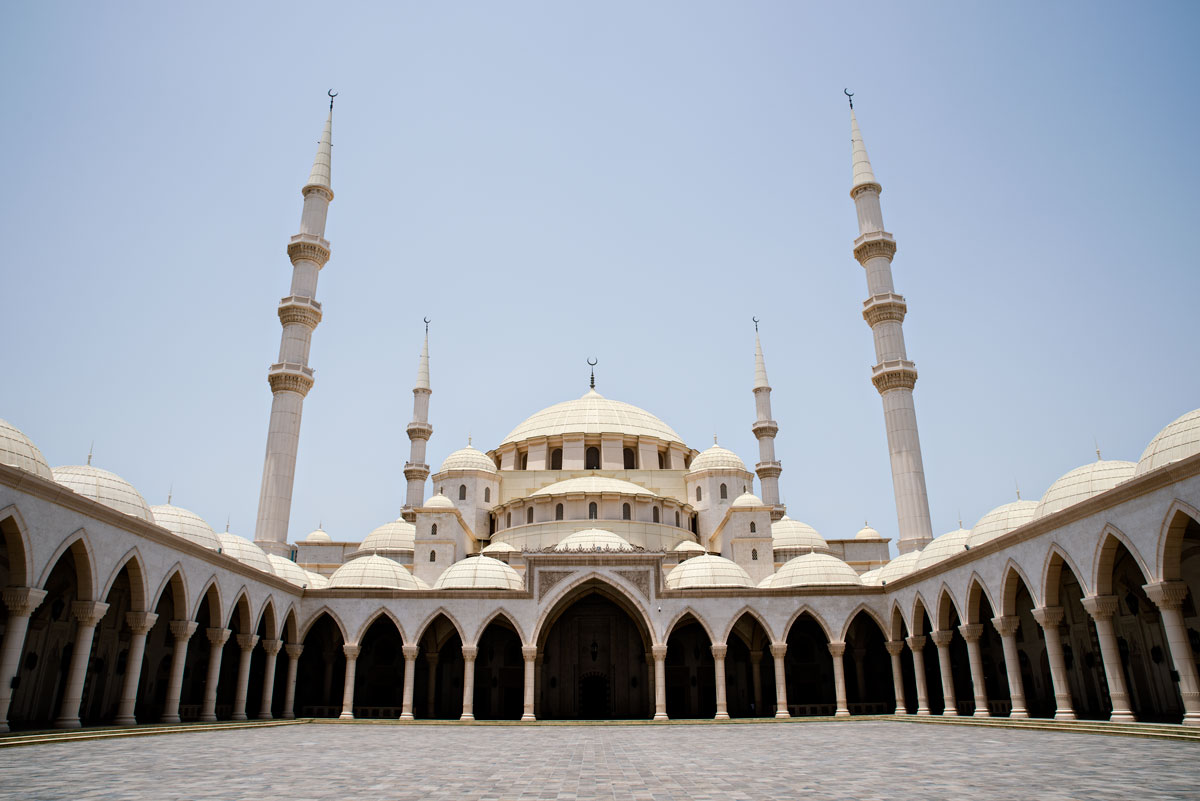
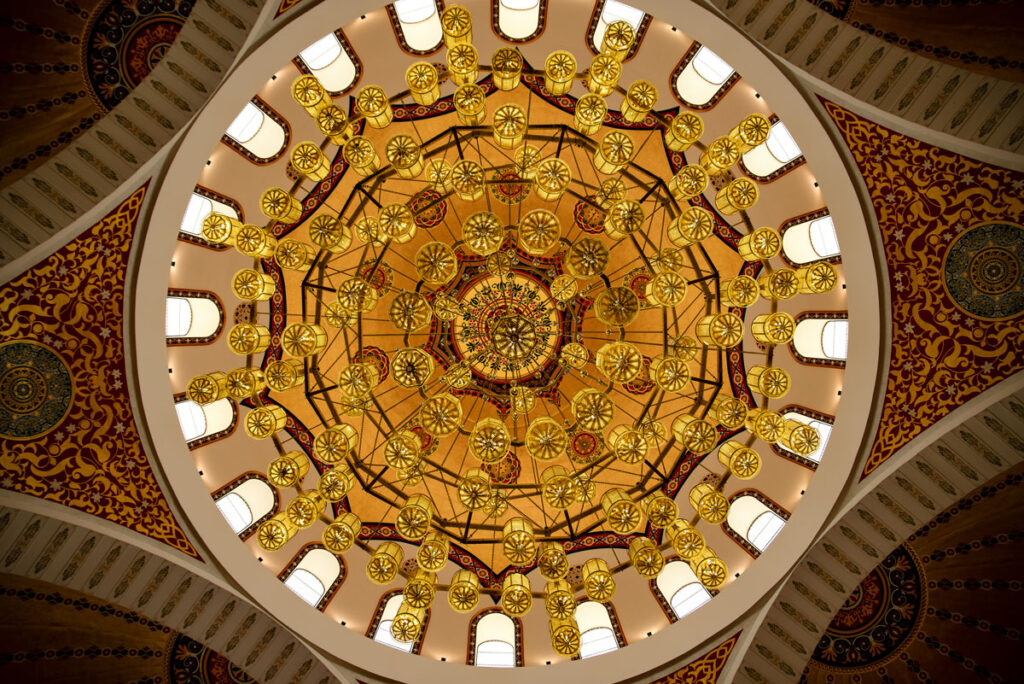
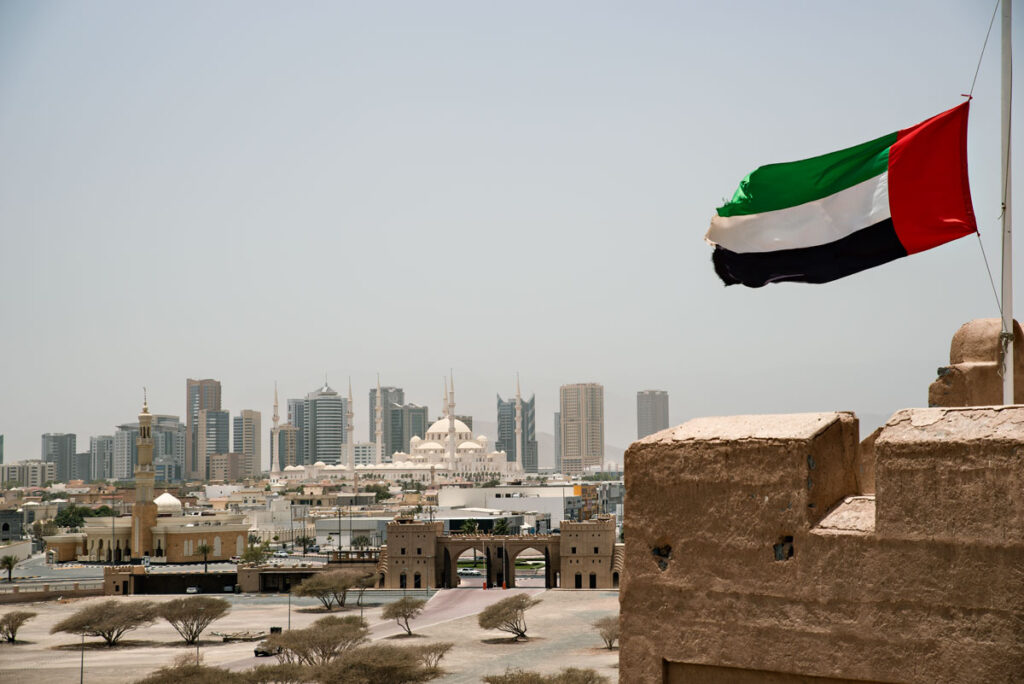
In Khorfakkan, to the north, an amphitheater was opened in 2020, a replica of the ancient world. The true history of the country, however, lies hidden in sand and rock. Numerous forts and residences, built by sheikhs and emirs in the last century, lie hidden in the mountains. They bear witness to a time when this was still a poor country through which nomads and desert tribes roamed.
For example, the Al Hayl Fort. It seems that rarely a vacationer strays here. A young man from Bangladesh lives a little apart in a barrack. He wears the uniform of a security guard and proudly guides visitors through the mud buildings. Rugged mountains fringe the horizon. A small oasis with date palms lies at their feet.
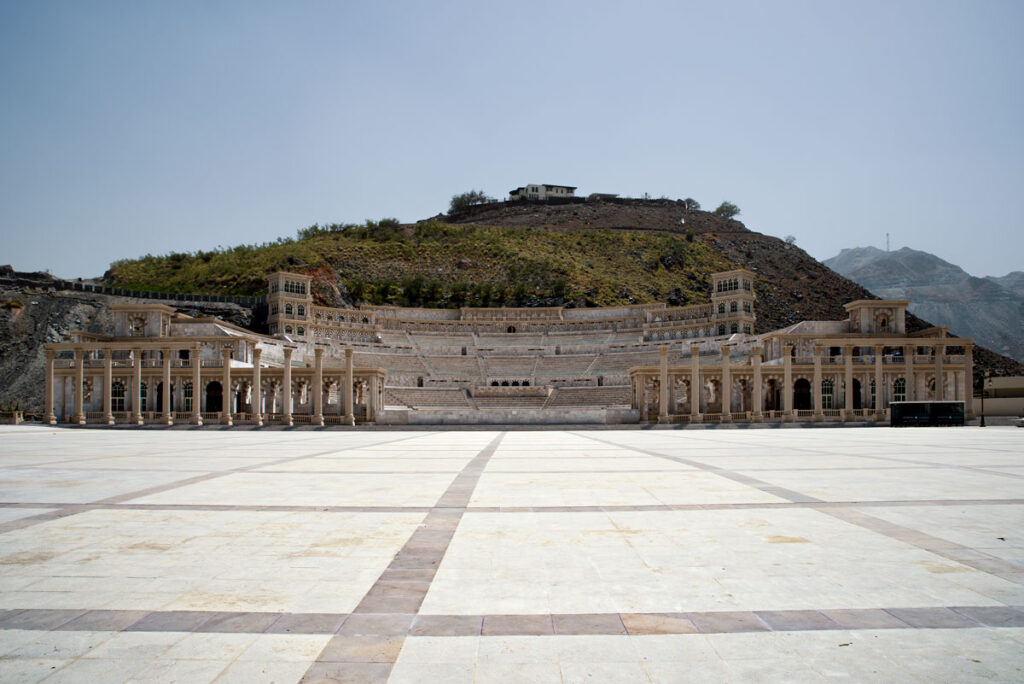
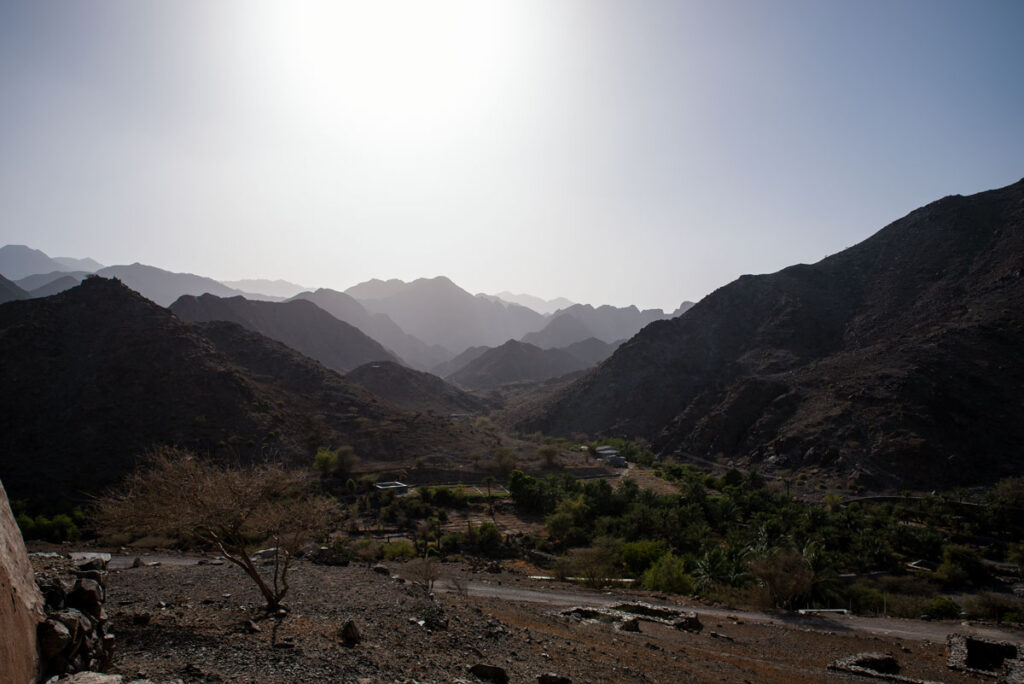
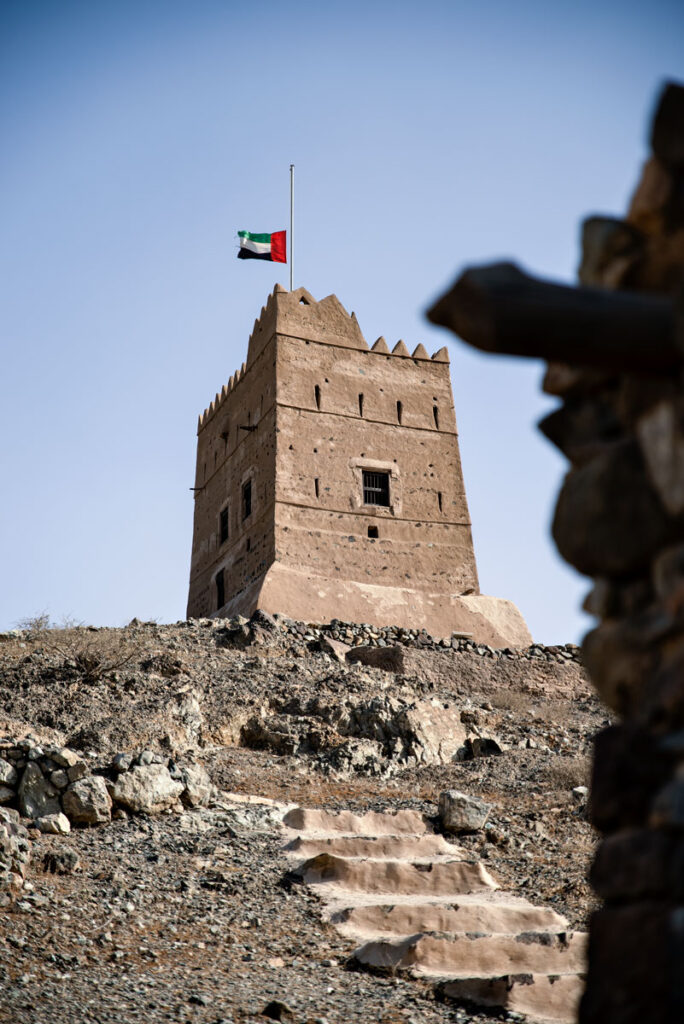
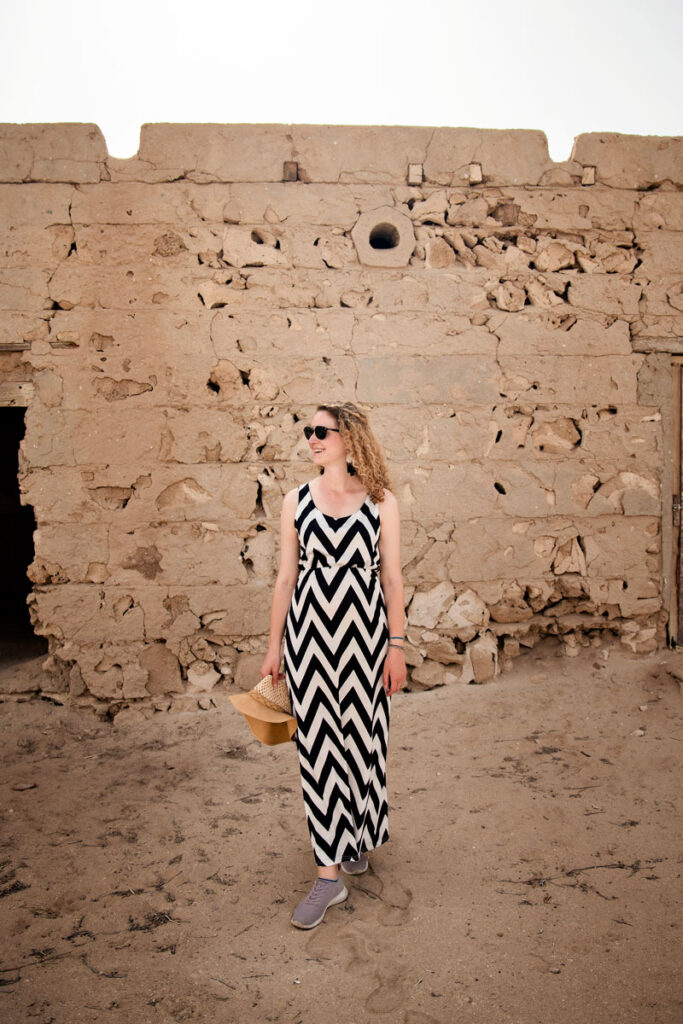
The last evening takes us into the desert. We steer our rental car over a dusty dirt road until we don’t want to subject it to the road conditions anymore. The last light of the day bathes the desert in warm tones. An off-road vehicle roars past us and disappears behind a dune.
After a week on the road through the Emirates, we are still unsure what to think of this country.
The gigantic, artificially-created Dubai is impressive. But it remains a Potemkin village. The stories that are beyond this megacity are interesting. Of the Syrian barber who fled the war and now cuts hair in Ra’s al Chaima. Of the Bangladeshi who dreamed of a glittering metropolis but now guards a decaying fort in the mountains. The Iraqi who made it to a museum guide but longs to return to his homeland.
These people give the United Arab Emirates a face.
Info about our trip
A trip to the UAE can be perfectly combined as a stopover with other destinations (especially on long-haul flights to Africa or Asia), as the airlines Etihad and Emirates stop over in Abu Dhabi and Dubai respectively. Of course, there are enough travelers who even spend one or two weeks in the Emirates – but in our opinion there are far more beautiful destinations for that.
How much time you want to spend here depends on your wishes. We were in the Emirates for 5 days, but left out the Emirate of Abu Dhabi. For Dubai, we only took 1.5 days because we were primarily interested in the rest of the country. Tourist attractions such as water parks, shopping tours, desert tours, etc. we have not undertaken here on principle, but instead focused on (free) or cultural sights. In every emirate you can find a national museum, a big mosque and a fort. In addition, there is a lot of modern architecture (which amazes, but at the same time is a deterrent example of ill-considered, and innovationless urban planning) and encounters with people who have a story of golden dreams to tell. To hear these stories, just go to the hairdresser’s, visit a Lebanese restaurant in a side street or visit a lonely fort in the mountains guarded by a young man from Bangladesh …
Cheap to infinity – that is the price level, there is hardly more to say. In the cities of Dubai and Abu Dhabi, prices start at about German prices, in the other emirates it gets cheaper.
Luxury restaurants offer every cuisine of the world of course. In addition, there are most of the fast food chains. It gets exciting when you go to places where immigrants prefer to eat – these are often less glamorous restaurants, but they usually offer delicious food at surprisingly low prices. You will find mostly Arabic, Indian, Lebanese or Syrian restaurants.
In Dubai, the choice of cheap places to stay is very limited. We slept in the Citymax Hotel Bur Dubai, which was perfectly fine. You won’t find luxury here, but the hotel is clean and the price is okay. But beware: restaurants and access to public transport are about 20 minutes walk away.
In the other cities you will find nicer hotels for less money. In Fujairah we can recommend the Concorde Hotel Fujairah. Here you get a great breakfast, have a pool with a beautiful view and luxurious rooms at an affordable price. However, the hotel is a bit outdated.
The crime rate in the UAE is low. Nevertheless, there are – in the outskirts of Dubai and also in other cities of the Emirates – abandoned/deserted neighborhoods with ruined houses where we did not feel comfortable. However, these neighborhoods are far from any tourist attraction and unless you’re just as curious as we were, there’s no reason to get there by accident.
For the most part, we found the people in the Emirates to be rather reserved and impersonal. From our experience, the Arab culture is very child-friendly. Everywhere there are offers for children (water parks, play areas in malls) and since you will not get from A to B without your own car outside of Dubai and Abu Dhabi anyway, the transport of strollers or extra luggage is not a problem. Public areas, infrastructure, stores and restaurants are mostly not barrier-free (another serious flaw that the Emirates have blindly adopted from other major cities around the world).
As mentioned before, in Dubai and Abu Dhabi you can easily get around by train and bus. If you want to get out of the cities and explore the other emirates like we did, you will need a car. Fortunately, you can rent a car everywhere for a reasonable price. The best place is directly at the airport.
